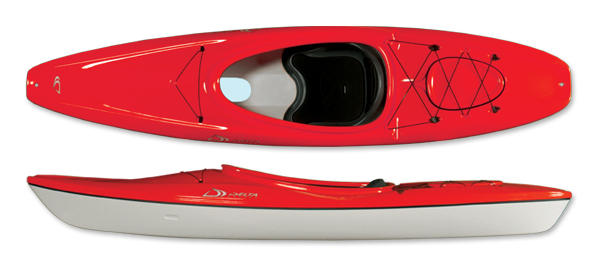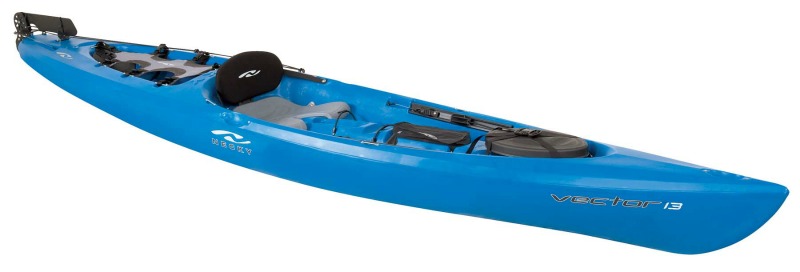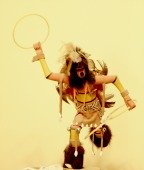Kayaking...
Your Guide To Kayaks
And Kayaking Lake Powell
For those of you who are new to the sport, kayaking Lake Powell is a good place to start.
For those of you who are experienced kayakers but new to Lake Powell, please see my page on Lake Powell Kayaking where I share with you some of the best places for kayaking Lake Powell.
Today, kayaking is a multi-million dollar sports industry. But, of course, it wasn’t always so.
Kayak is an Inuit word meaning hunter’s boat, and, as one would imagine, was used primarily for hunting.

Photo Courtesy: Royal Ontario Museum (www.rom.on.ca)
Robert J. Flaherty Collection, Gift of Sir William Mackenzie
It was a long, low and narrow vessel made of seal skins stretched over a frame of driftwood and/or bones pieced together with sealskin rope and wood pegs.
Today’s kayaks, in marked contrast, can be made from such materials as fiber glass, Kevlar, plastic (polyethylene and polyurethane) and galvanized rubber.
There are kayaks for handling different kinds of water and for different situations, such as surfing, whitewater running, touring and general recreational use:
• Surf Kayaking - The sport of surfing ocean waves with kayaks.
Instead of a surf board the surfer uses a specially designed kayak to ride the waves and use them to propel the craft.
Although sizes may vary, the 2011 World Championship Surf Kayaking Rules specify that the short boat must be 9.02 feet and the long boat be 9.24 feet.
• Whitewater Running - the sport of paddling a kayak on a swiftly moving body of water, especially one filled with rapids. These rapids can range from the mildly exhilarating to the scary dangerous as in the video below.
Lengths vary between 6 to 9 feet, but 7 to 8 feet seem to be the preferred sizes.
• Touring: A touring kayak or sea kayak is a kayak developed for paddling on open waters of lakes, bays and the ocean.
Touring Kayaks trade off the tight maneuverability of whitewater kayaks for cargo capacity, ease of straight-line paddling, and comfort for journeys of just a few hours to many weeks while carrying food, water and other supplies.
They typically range from 12 to 21 feet in length and are well suited for extended trips kayaking Lake Powell.
Kayaking Lake Powell/Antelope Canyon
• Recreational: Recreational kayaks are designed for the casual or beginning paddler interested in fishing, photography, or just a peaceful paddle on a lake or flat-water stream or river.
Recreational kayaks are characterized by having a larger cockpit opening for easy entry and exit and a wider beam for more stability on the water.
|
They are generally less than twelve feet in length, which makes them slower than a longer boat would be, but lighter, easier to handle in and out of the water, and less expensive. |
Books about Kayaking may be purchased through Amazon.com by clicking the link below. Kayaking |
They tend to have limited cargo capacity and are typically made of less expensive materials like polyethylene.
They do not perform as well in the sea as a touring kayak.
They would be good for day trips kayaking Lake Powell.

Delta 10 Kayak - Photo: Courtesy Delta Kayaks
The broader kayak categories today are:
• Sit-In Kayaks (SINK), where you actually sit inside the kayak with your feet and legs extending toward the front beneath the deck.

Photo: Courtesy Necky Kayaks
• Sit-On-Top (SOT) has an open, shallow depression in the hull in which the paddler sits literally on top of the kayak.

Photo: Courtesy Necky Kayaks
• Stand Up Paddleboards (SUP) are a relatively new sport in which the paddler stands on a board, similar to a surf board, and propels himself using a long (6-8 foot) paddle.
If you are interested in learning more about this new and exciting sport, please go to my page on Stand Up Paddleboarding.
Here is a quick comparison of the differences between Sit-in Kayaks and Sit-on-Top Kayaks:
SINK (Sit-in kayak):
• Cockpit is smaller
• The paddler is closer to the water
• Faster due to its long and narrow profile
• Better for covering longer distances
• Paddler’s lower body is protected from the elements (sun, cold, rain, etc)
• The paddler stays drier, especially when using a spray skirt
• It can get very warm inside cockpit in hot weather
• Hatches keep contents dry
• The cockpit can flood with water when the kayak is flipped
• Not as easy to get in and out (especially on the water)
• Cockpit can restrict movement and make it difficult to change positions
• Access to items placed on back deck can be difficult
• When underway cannot access items in hatches.
They would be great for touring and kayaking Lake Powell.
SOT (Sit-on Top)
• They are short and wide, making them slower and more difficult to paddle than sit-in
• Their wider beam makes them less efficient at long distances
• But, this extra width makes them more stable and easier to keep upright
• If they do turn over, they are easier to upright since there is no enclosed cockpit to fill with water
• They are usually more stable than sit-ins
• They are easier to get in and out (especially on the water) than sit-ins
• For all of the above, they are more ideal for beginners than sit-ins
• Their wider width requires a slightly longer paddle
• With the open cockpit there is more freedom of movement
• They are best for fishing and surfing
• Paddler is exposed to the elements (sun, cold, water, etc)
• Paddler is more exposed to wave splash and paddle drip, resulting in a constantly wet bottom
• They have a large storage area on the deck which is more easily accessible
• Storage area is more exposed to the elements than sit-ins
They would be great for a day or two kayaking Lake Powell.
Okay, so which is best?
I guess there really is no definitive answer to that question.
In the end, it comes down to personal preference and the type of activity for which you will be using your kayak.
If you will be fishing or photographing 90% of the time and touring only 10% of the time, you should get a Sit-on-Top.
If, on the other hand, 90% of the time you will be touring and only 10% fishing, the Sit-inside-Kayak would probably be your better choice.
Both types of boats may be found kayaking Lake Powell.
Kayak Accessories:
Kayak Vests should be a US Coast Guard Class type III PFD (Personal Flotation Device).They can either be a vest-style or a pullover style.
PFDs designed for kayakers should have large neck and armholes and narrow shoulder straps with a variety of adjustable straps at the waist, shoulder and armholes to provide a proper, snug fit.
Spray Skirts for Sit Inside Kayaks should be considered an essential piece of kayaking gear. They are worn around the waist to form a seal around the edges of the cockpit to keep water off you and out of the boat.
It should not only maintain a secure seal on the boat, but it must also be capable of coming off easily and reliably in the event the paddler needs to make a quick exit.
Spray skirts can made of nylon, neoprene or a neoprene/nylon combination.
Kayak Rudders, contrary to what many people think, are not used to turn the kayak.
Although they may aid in turning the boat, their primary use is to keep the kayak tracking straight through the water.
Kayak rudders generally rest on top of the stern of the kayak and are lowered as needed.
Skeg is a small fin, located near the stern of the kayak, which acts like a keel to keep you going straight.
Its function is to "trim" the boat when conditions affect its performance by either raising it or lowering it.
• When the Skeg is up, the kayak turns slightly into the wind.
• When the Skeg is down, the kayak turns downwind.
• When the Skeg is half way down the kayak turns crosswind.
According to Farwell Forrest, writing for Paddling.Net,
they “… can give you the best of both worlds, without the complexity and fussiness of rudders.
Now you see it. Now you don't.
Now that's real magic—and a tidy solution to the age-old problem of going straight.”
Two-bladed Kayak Paddle is simply a shaft with a blade at each end.
Most double-bladed paddles have blades which are offset by an angle between 45 and 90 degrees.
This is done so that the upper blade will cut cleanly through the air during the forward stroke offering minimum wind resistance.
The ideal kayak paddle is light, strong, comfortable, and cheap.
However, don’t give up light, strong and comfortable for cheap. That is false economy.
After days or even hours of paddling, paddles which are light and comfortable are worth their weight in gold.
Have A Great Story About This Topic?
Lake Powell is one of the most beautiful lakes in the United States.
It is a magical place, a place that casts her spell over all of us who visit her, drawing us back to her crystal waters year after year.
If you would like to share a memorable Lake Powell vacation, please fill out the form below.
References and Resources for Kayaking Lake Powell:
Going Straight—Do You Need a Rudder or Skeg for Your Kayak?
By Farwell Forrest
http://www.paddling.net/guidelines/showArticle.html?33
BIC Sport
http://www.bicsport.com/the-company,12.html
bicsup.com
http://www.bicsup.com/products/choose-your-board,58.html?campaign=pnet
Paddling.net
http://www.paddling.net/guidelines/showArticle.html?17
REI
http://www.rei.com/expertadvice/articles/paddleboarding.html
Royal Ontario Museum
www.rom.on.ca
2011 World Surf Kayaking Championships Rules
http://www.worldchampionshipsofsurfkayaking.com/wska-rules-current-2010-11/
Return From Kayaking Lake Powell To Boating Lake Powell
Return From Kayaking Lake Powell To Lake Powell Country

